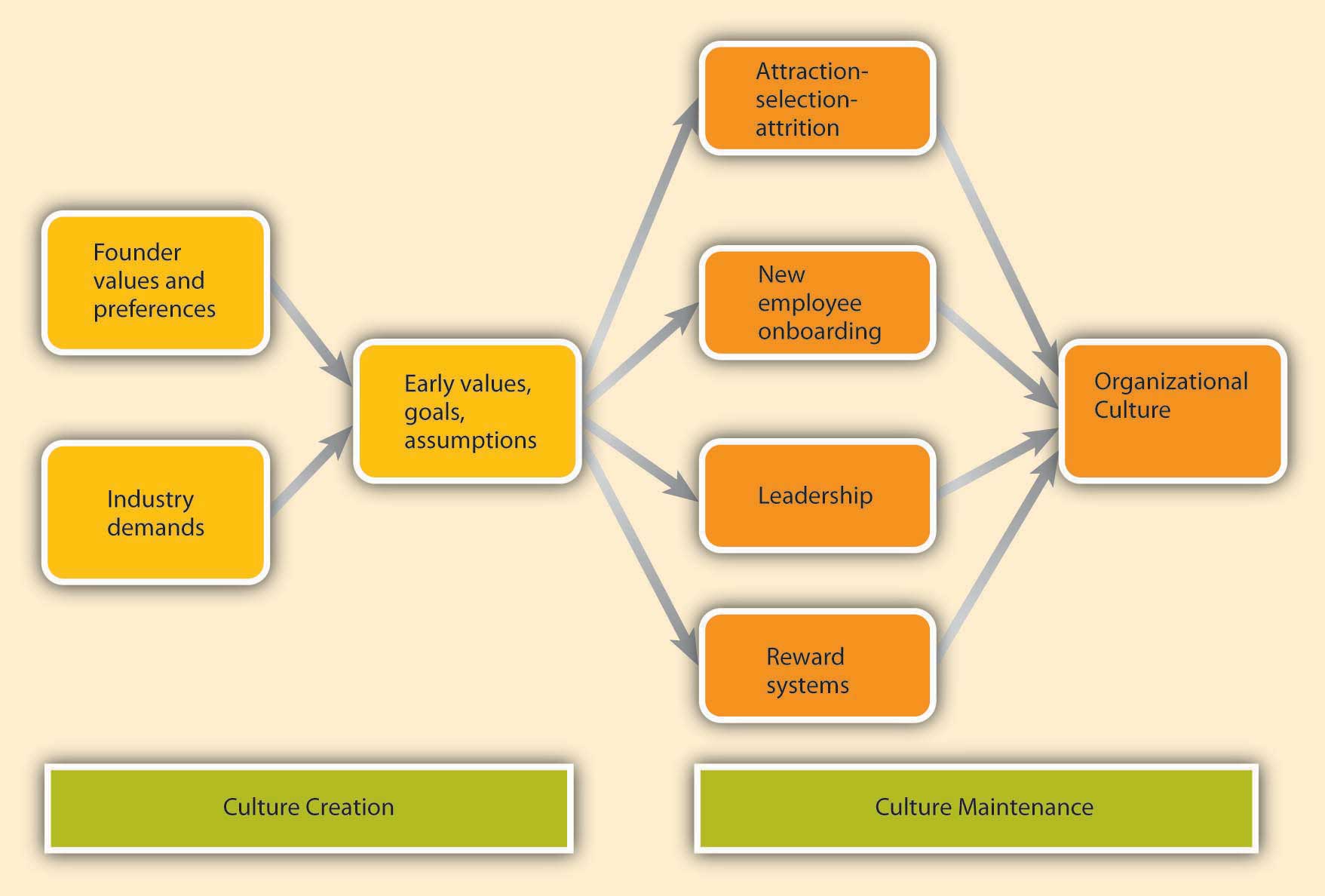Identify a True Statement About Organizational Culture
Organizational culture is a system of shared assumptions values and beliefs which governs how people behave in organizations. It also leads to high levels of workforce engagement which drives productivity.

Organizational Culture Definition Characteristics Roles Types
It is just as important during these interviews to observe the behaviors and interaction patterns of the people as it is to hear what they say about the culture.

. The actions managers exert can improve a companys culture. Indicate whether the following statement is true or false. In the organizational culture people and groups interact with each other including clients partners and employees.
These shared values have a strong influence on the people in the. One of the important ways to understand culture through artifacts is identifying the unconscious assumptions of people. Organizational ethics pertain to the moral values beliefs and rules that establish the appropriate way for.
It determines the extent to which an individual member is isolated from the culture. Culture can be understood in terms of seven different culture dimensions depending on what is most emphasized within the organization. Itdetermines the extent to which an individual member is isolated from the culture.
It uses norms to enforce desired behavior. This motivates and inspires employees to be more engaged in their work duties and interactions with others. BOne of the important ways to understand culture through artifacts is identifying the unconscious assumptions of people.
It negates communication constituents like symbols and logos. COne of the important ways to understand. The statements a b and d are true because employees may be uninformed of the underlying hypotheses that supervise an organizations culture.
Organizational culture includes an organizations expectations experiences philosophy as well as the values that guide member behavior and is expressed in member self-image inner workings interactions with the outside world and future expectations. Identify a true statement about organizational culture. Organizational culture can be thought of as consisting of three interrelated levels Schein 1992.
Many workplaces have customs or rituals that become obvious within just a couple of weeks on the job. A work environment that possesses organizational culture is driven by purpose and clear expectations. Organizational culture encompasses values and practices that provide the.
It defines and creates a unique environment to work in. Culture is based on shared attitudes beliefs customs and written and unwritten rules that have been developed over time. Identify a true statement about artifacts of an organizational culture.
Since it is usually difficult for people to put into. Organizational culture is the set of underlying beliefs values principles and ways of interacting within an organization. AThe key to understanding culture through artifacts lies in analyzing how values are consciously articulated in conversations.
Identify a true statement about a strong organizational culture. An integrated culture is flexible adaptable coherent energized and stable. 33Identify a true statement about artifacts of an organizational culture.
Organizational culture consists of some aspects that are relatively more visible as well as aspects that may lie below ones conscious awareness. Itnegates communication constituents like symbols and logos. Identify a true statement about artifacts of an organizational culture.
One of the important ways to understand culture. The key to understanding culture through artifacts lies in analyzing how values are consciously articulated in conversations. Things like an organizations expectations vision philosophy image interactions within the office and outside of the office also define what the organizations culture is all about.
Identify a true statement about organizational culture. Group of answer choices It is constant and remains the same in all organizations throughout the world. The mission is intended to remind employees why they are there and what their goals and attitudes should be.
Another way to understand the culture of your organization is to interview your employees in small groups. Which of the following is the first step in the training cycle. At the deepest level below our awareness lie basic assumptions.
Itis constant and remains. According to Elizabeth Skringar Organizational culture is shaped by the main culture of the society we live in albeit with greater emphasis on particular parts of it According to Abdi Osman Jama An organization is a living culture that can adapt to the reality 4s fast as possible. Organizational culture is learned through observing and interacting with employees events and training.
The key to understanding culture through artifacts lies in analyzing how values are consciously articulated in conversations. One of the important ways to understand culture. In many corporations the organizational mission is posted on every floor.
These assumptions are taken for granted and reflect beliefs. For example innovative cultures are flexible and adaptable and they experiment with new ideas while stable cultures are predictable rule-oriented and bureaucratic. Organizations like other healthy complex systems have the ability to perceive the organizations internal state to reflect on experiences and encourage interconnectedness between people.
One of the important ways to understand culture through artifacts is identifying the unconscious assumptions of people. It means that good organizational culture can bring into following benefits including perfect customer service efficient cooperation with partners consistent employee performance and strong social responsibility. Culture can generate ambitious resources for a company.

A Guide To The 3 Most Popular Corporate Culture Models

12 4 Creating And Maintaining Organizational Culture Fundamentals Of Leadership

Edgar Schein Organizational Culture Artifacts Values Assumptions

Edgar Schein Organizational Culture Artifacts Values Assumptions
Comments
Post a Comment